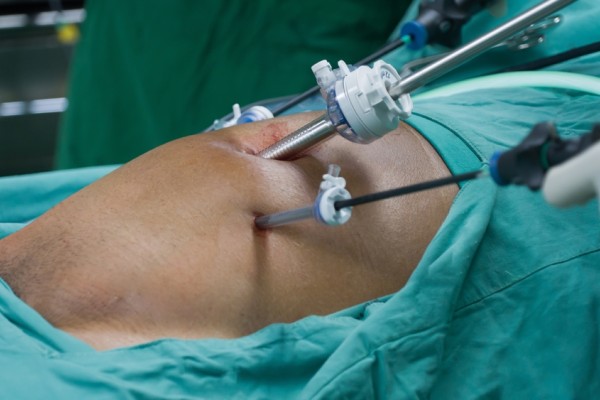Follow-Up Care for Laparoscopic Hernia Repair

Following a laparoscopic hernia repair, proper aftercare is essential to support healing and minimize complications. This minimally invasive procedure allows for faster recovery compared to traditional open surgery, but post-operative care still plays a critical role in achieving successful outcomes. Patients are encouraged to follow all instructions closely and attend scheduled follow-up appointments to ensure the hernia site is healing properly.
What to expect after surgery
Mild swelling, bruising, or soreness at the incision sites is common after laparoscopic hernia repair. Patients may also experience temporary fatigue or bloating as the body adjusts. In most cases, these symptoms resolve on their own within a few days. Pain is usually manageable with over-the-counter medications or prescriptions provided at discharge. Activity may be restricted initially, with lifting and strenuous exercise avoided for at least one to two weeks.
We typically schedule a follow-up appointment within one to two weeks after surgery. During this visit, the surgeon checks the incisions, assesses the repair site, and ensures there are no signs of infection or other complications. Patients are encouraged to share any concerns, including changes in pain, swelling, or mobility.
Wound care and recovery tips
Proper wound care is essential after laparoscopic hernia repair. Patients may remove dressings within 24 to 48 hours and should ensure they keep the incisions clean and dry. Most patients can shower within a few days but must avoid baths, pools, or soaking until the surgeon confirms healing is sufficient.
To promote a smooth recovery:
- Eat a balanced diet rich in fiber to prevent constipation, which can strain the surgical site
- Stay hydrated and gradually increase physical activity with light walking to support circulation
- Avoid lifting objects heavier than 10 pounds until cleared by the surgeon
Signs of infection, such as increased redness, warmth, pus, or fever, should be reported promptly.
Long-term care and monitoring
While complications are uncommon, long-term follow-up is important for detecting recurrence or mesh-related issues. A properly performed laparoscopic hernia repair has a low recurrence rate; however, ongoing attention to core strength, posture, and body mechanics helps reduce the risk of recurrence in the future.
Patients who return to physically demanding work may need additional clearance before resuming full duties. The surgeon may recommend core exercises or physical therapy to help strengthen the abdominal wall after the healing process. Maintaining a healthy weight and avoiding smoking also support lasting results.
In the months following surgery, occasional discomfort or tightness may occur around the repair site as scar tissue forms. This is normal, but any sudden or severe pain should be evaluated.
Ensuring a smooth recovery after surgery
Proper follow-up care after laparoscopic hernia repair is essential to ensure healing and long-term success. By following post-operative instructions, attending scheduled evaluations, and adopting a healthy lifestyle, patients can minimize complications and reduce the risk of recurrence. With attentive care and regular monitoring, most individuals return to full activity with lasting relief.
For more information or to schedule a consultation, call Associates in General Surgery at (562) 362-3939.
To schedule a consultation, request an appointment on our website at https://aigsca.com or call Associates in General Surgery at (562) 362-3939 for an appointment in our Long Beach office.
Check out what others are saying about our services on Yelp: Read our Yelp reviews.
Related Posts
A cholecystectomy is a surgical procedure performed to remove the gallbladder, which is a small organ located beneath the liver. The gallbladder stores bile, a digestive fluid that helps break down fats. When your gallbladder is diseased or causes discomfort, a general surgeon may recommend a cholecystectomy to restore your digestive health and prevent further…
Gallbladder surgery is a common procedure performed by general surgery teams to treat gallstones or gallbladder inflammation. Also known as a cholecystectomy, the surgery removes the gallbladder to relieve pain, nausea, and digestive issues, among other issues. For many patients, gallbladder surgery offers a long-term solution that restores comfort and supports a healthier lifestyle.Before gallbladder…
Do you need surgery in the near future? Choosing the right general surgeon can make the operation and post-operative recovery as simple as possible. Considering the following factors can guide you through the decision-making process and help you choose a general surgeon who can improve your short- and long-term health.Recommendations from trusted healthcare providers, family…
Hernia surgery is a common procedure performed by general surgeons to repair a hernia, a condition in which an internal part of the body, such as an organ or tissue, protrudes through a weakened area of muscle or connective tissue. This condition can occur in various parts of the body, including the abdomen, groin, and…
